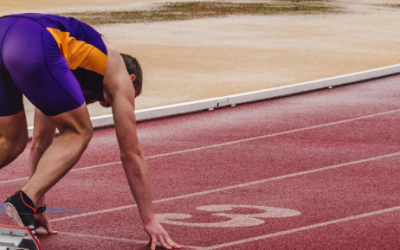All athletes seek a competitive advantage and try to get an edge over other participants. This is why the English football players prior to the South Africa World Cup spent two weeks training in the Austrian Alps and many Olympic athletes spend weeks at higher altitude training centres such as the United States Olympic Training Centre, which is located just south of Denver, Colorado, because it is the highest city in the United States.
At high altitude air molecules are more sparsely spread, making the actual amount of oxygen taken in with each breath lower. To compensate for the lack of oxygen, our body triggers the release of a hormone from the kidneys called erythropoietin (EPO). This causes an increase in the production of Red Blood Cells (RBC). RBC carry oxygen around your body; more RBC mean more oxygen can be transported to muscles and organs, translating to a continuous and increased amount of energy being produced to fuel exercise.
Many top-end endurance athletes opt to utilise such extreme conditions for living and training. Altitude training, both in natural and artificial conditions, has been established as an effective means to improve oxygen transport, RBC volume, and VO2max (the maximum or optimum rate at which the heart, lungs, and muscles can effectively use oxygen during exercise), given sufficiently high “doses” of elevation and duration of exposure (9). Longer-term adaptations to altitude are primarily more beneficial to the athlete. These adaptations include increased erythrocyte volume and haemoglobin content, increased oxidative enzyme activity, mitochondrial volume, free fatty acid substrate utilization and capillary density (1) and contribute towards the athlete performing better.
However, these haematological adaptations do not last long; in a group of world-class biathletes, total haemoglobin and RBC volume increased after 3 weeks of altitude training, with these parameters returning to baseline by the post-altitude test 16 days after returning to sea-level (2)
A number of different models for altitude training have been investigated, with Live High-Train Low (LHTL) being found to consistently improve haematological parameters and provide significant performance improvements in both elite and sub-elite athletes. (9) This model of altitude training has been demonstrated to increase RBC mass and sea-level endurance performance in runners (3,4,5), orienteers (6) and swimmers (7).
Current recommendations suggest altitudes of 2500 to 3000 meters above sea level are probably more effective than lower altitudes and athletes should spend at least 12 h/day at altitude or in hypoxic conditions (8).
Altitude training is a popular way of training, especially among elite endurance athletes, and has a positive effect on performance. The efficacy of altitude/hypoxic training and the best practice for its use are still being debated in research and individual variation in the response to altitude training is not yet fully understood.
References
- Bailey DM, Davies B. Physiological implications of altitude training for endurance performance at sea level: a review. Br J Sports Med 1997;31:183–90
- Heinicke K, Heinicke I, Schmidt W, Wolfarth B. A three-week traditional altitude training increases hemoglobin mass and red cell volume in elite biathlon athletes. Int J Sports Med 2005;26:350–5
- Chapman RF, Stray-Gundersen J, Levine BD. Individual variation in response to altitude training. J Appl Physiol (1985) 1998;85:1448–56
- Levine BD, Stray-Gundersen J. “Living high-training low”: effect of moderate-altitude acclimatization with low-altitude training on performance. J Appl Physiol 1997;83:102–12.
- Chapman RF, Karlsen T, Resaland GK, Ge R-L, Harber MP,Witkowski S, et al. Defining the “dose” of altitude training: how high to live for optimal sea level performance enhancement. J Appl Physiol 2014;116:595–603
- Wehrlin JP, Zuest P, Hallén J, Marti B, Live high-train low for 24 days increases hemoglobin mass and red cell volume in elite endurance athletes. J Appl Physiol 2006;100:1938–45
- Rodríguez FA, Iglesias X, Feriche B, Calderón-Soto C, Chaverri D, Wachsmuth NB, et al. Altitude training in elite swimmers for sea level performance (altitude project). Med Sci Sports Exerc 2015;47:1965–78.
- Dufour SP, Ponsot E, Zoll J, et al. Exercise training in normobaric hypoxia in endurance runners. J Appl Physiol 2006;100:1238–1248.
- Sinex J, Chapman RF. Hypoxic training methods for improving endurance exercise performance: review. Journal of Sport and Health Science 4 2015;325–332.



